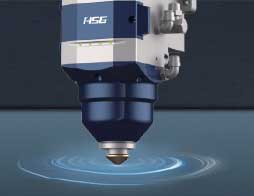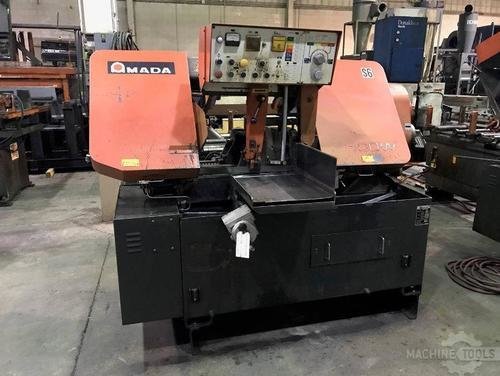As someone who’s spent years working closely with fabrication shops across the Midwest, I’ve seen firsthand how the right equipment choices can transform a business. My role at Mac-Tech is all about helping fabricators solve real-world production challenges—whether that means recommending a smarter press brake, walking through the ROI on a higher-wattage fiber laser, or being there on the shop floor for hands-on support. When new shops ask me about scaling up from 3kW to 6kW and beyond, my advice is always grounded in practical experience and a commitment to their long-term success.
Understanding the ROI Impact of Upgrading Laser Power in Fabrication Shops
Upgrading from a 3kW to a 6kW fiber laser isn’t just about cutting faster. It’s about unlocking capacity, taking on thicker material, and streamlining your workflow to handle higher volumes. The ROI comes from both increased throughput and the ability to say “yes” to more complex jobs that would have been out of reach with lower-wattage equipment. For many shops, this can mean doubling or even tripling their output on certain materials.
It’s important to look beyond the sticker price and consider how many more parts you can process per shift, how much less secondary finishing is required, and the ripple effect on your entire operation. When I sit down with shop owners, we run real numbers: jobs per hour, labor savings, and even the cost of missed opportunities. The conversation quickly shifts from “Can we afford this?” to “How soon can we have it installed?”
Building Trust Through Hands-On Equipment Demonstrations and Shop Assessments
One thing I always tell new shops is that seeing is believing. No amount of sales talk can replace a hands-on demonstration with the actual machines you’re considering. At Mac-Tech, we invite fabricators to bring their own parts and materials to our showroom or even arrange on-site demos. This isn’t just about showing off features—it’s about building trust and ensuring the equipment performs in your specific environment.
During shop assessments, I pay close attention to workflow bottlenecks, material handling, and the skill level of your team. Sometimes a small change in layout or a new automation feature can unleash the full potential of a new fiber laser or press brake. My goal is to make sure every upgrade fits seamlessly into your operation and delivers measurable results from day one.
Press Brake Advancements That Drive Consistent Productivity Gains
Modern press brakes have come a long way in terms of precision, repeatability, and ease of use. With high-speed backgauges, offline programming, and advanced crowning systems, today’s machines minimize setup time and reduce the risk of operator error. For shops upgrading their laser power, matching that cutting speed with equally efficient bending operations is crucial.
I encourage shops to look for press brakes with intuitive controls and robust safety features, especially if they’re scaling up and bringing in less-experienced operators. Investing in press brake technology that supports quick tool changes and automated processes means you can keep pace with your laser’s output, prevent bottlenecks, and maintain consistent quality across every shift.
Matching Fiber Laser Technology to Real-World Throughput and Cut Quality Demands
Not all fiber lasers are created equal. When scaling up to 6kW or beyond, it’s essential to match the machine’s capabilities to your actual production mix. Thicker plate, reflective materials, or intricate geometries all place different demands on your equipment. I work with shops to analyze part drawings, material types, and batch sizes to ensure the selected laser meets both speed and cut quality requirements.
It’s also important to factor in the software and automation options available. Advanced nesting, real-time monitoring, and integrated load/unload systems can dramatically boost throughput and free up skilled labor for higher-value tasks. The goal is to create a balanced workflow where your laser, press brake, and downstream processes work in harmony.
ERMAKSAN POWER-BEND FALCON BENDING MACHING
Strategic Tooling Choices That Maximize Equipment Investment
Tooling is often overlooked, but it plays a huge role in achieving the ROI you expect from new equipment. The right press brake tooling can reduce setup times, improve bend accuracy, and extend the life of your machine. I advise shops to invest in modular tooling systems that allow for quick changes and support a wide variety of jobs without constant retooling.
For fiber lasers, nozzle selection, lens maintenance, and consumable quality all impact cut consistency and long-term reliability. I help customers develop preventive maintenance routines and choose consumables that strike the right balance between cost and performance. Smart tooling and maintenance decisions can turn a good machine into a great one, especially as you scale production.
Calculating Total Cost of Ownership for Smarter, Scalable Growth Decisions
The initial purchase price is just one part of the equation. I always encourage shops to consider the total cost of ownership over the machine’s lifespan—including maintenance, consumables, energy use, and the impact on labor costs. With higher-wattage fiber lasers and advanced press brakes, the efficiency gains often offset the higher upfront investment within a surprisingly short period.
We use detailed cost calculators to project not just break-even points, but also long-term savings and revenue growth. Factoring in resale value and potential for future upgrades ensures that your investment keeps paying dividends as your business evolves. The shops that take this holistic approach are the ones that scale smoothly and stay ahead of the competition.
FAQ
What’s the typical payback period when upgrading from 3kW to 6kW fiber lasers?
Most shops see ROI within 18–24 months, depending on production volume and material types.
Will I need to retrain my operators when upgrading equipment?
Modern controls are much more user-friendly, but some training is always recommended to maximize productivity and safety.
How do I know if my shop is ready for automation?
If you’re struggling with labor shortages or bottlenecks, automation can offer immediate benefits. A shop assessment can pinpoint where it fits best.
Does a higher-wattage laser mean higher operating costs?
While energy consumption increases, the gains in throughput and reduced labor often result in lower cost per part.
Can I retrofit my current press brake with new tooling or automation?
In many cases, yes—especially with modular tooling systems and retrofit automation kits.
What support does Mac-Tech offer after installation?
We provide on-site training, preventive maintenance plans, and responsive technical support to keep your equipment running at peak performance.
Get Weekly Mac-Tech News & Updates







